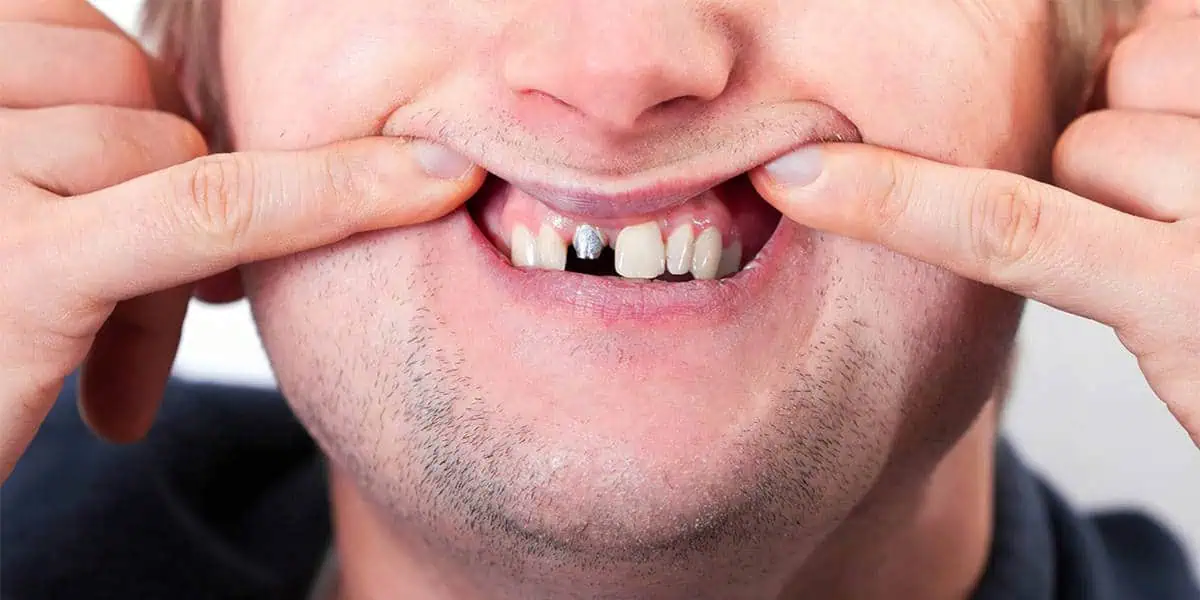Broken Tooth? Did you know that a broken tooth is a much more common health issue than many people would think? Despite considering our teeth to be particularly strong and resistant, they can still become damaged and break due to external factors – even tooth decay can lead to a broken tooth. But what should you do when you have a broken tooth?
In addition to being extremely painful, these injuries can cause severe inflammation without professional dental treatment, leading to further problems. A broken tooth is not just an aesthetic issue – that’s why it’s important to know what options are available when trouble strikes.
Causes of a broken tooth
What can cause tooth breakage? The most obvious reasons include biting or chewing on hard foods (such as candy, ice cubes, or accidentally biting into fruit pits) that can result in a broken tooth. Additionally, accidents (including sports injuries) that involve strong external impacts can cause one of your front – or even back teeth – to break.
It’s common for only a small piece of the tooth to break off, typically affecting front teeth (but it can also damage pointed chewing surfaces), resulting in a chipped, less aesthetic broken tooth, which generally doesn’t cause pain.
When a crack appears in your tooth, the injury can affect the entire tooth: from the enamel to the nerve. However, early diagnosis and targeted dental treatment can save the tooth. Without dental intervention, the crack can gradually spread, and the damaged tooth can no longer be saved. Cracks can deepen due to nighttime teeth grinding.
It is also possible for your tooth to break vertically; this requires immediate dental care as it comes with a significant amount of pain.
Another cause for a broken tooth is if it was weakened from the inside from a cavity.
Dealing with a broken tooth
What should you do if a tooth chips or breaks? Under no circumstances should you leave a broken tooth untreated. The damaged area is even more prone to tooth decay. Untreated cracks can lead to tooth fractures at the tooth root, which is an extremely painful condition. Seek a dentist as soon as possible: they will be able to recommend a restoration solution that best suits your individual needs and health condition.
Tooth restoration
What are the ways to restore a broken tooth? For minor fractures and chips, a dental filling may be sufficient. In the case of front teeth, a light-cured composite resin is bonded to the broken area, matching the natural color of the teeth perfectly.
Root canal treatment is necessary if the crack in the tooth reaches deep enough. If you experience tooth sensitivity, swelling, or toothache, root canal treatment is likely needed. This treatment involves the removal of nerves and the pulp of the tooth. Afterward, the root canal is cleaned and sealed. Without immediate treatment, the infection (which develops due to untreated inflammation) can spread further, leading to other serious health problems.
Dental veneers are primarily used in dentistry for the restoration of broken front teeth because the end result is completely natural, aesthetic, and long-lasting (for up to decades even). Veneers can be made of composite resin or porcelain, depending on the size of the broken tooth fragment. About 0.5 mm of the enamel is removed from the broken tooth’s surface, and the extremely natural-looking veneer is bonded in its place.
Dental crowns are a common form of restoring broken teeth. Crowns can be made from different materials, including metal, ceramic, or porcelain. The preparation of the crown’s location and the fabrication of the structure in the dental laboratory do not take much time, and in two to three weeks, you can smile with a perfect replacement.
In some cases, a broken tooth cannot be treated and saved. In such situations, the tooth is extracted, and a missing tooth is replaced with a dental implant that perfectly matches the original teeth. During the dental implant procedure, the artificial tooth root must fully integrate into the jawbone, and this healing process can take several months. The end result though is a stable, naturally aesthetic tooth replacement for life.
The longer you delay the treatment of a broken tooth, the higher the risk of infection and the possibility of losing the given tooth permanently. If you are facing this problem, please contact our dental practice. Our specialists will answer all your questions and provide personalized recommendations to help you find the best solution for your needs.

